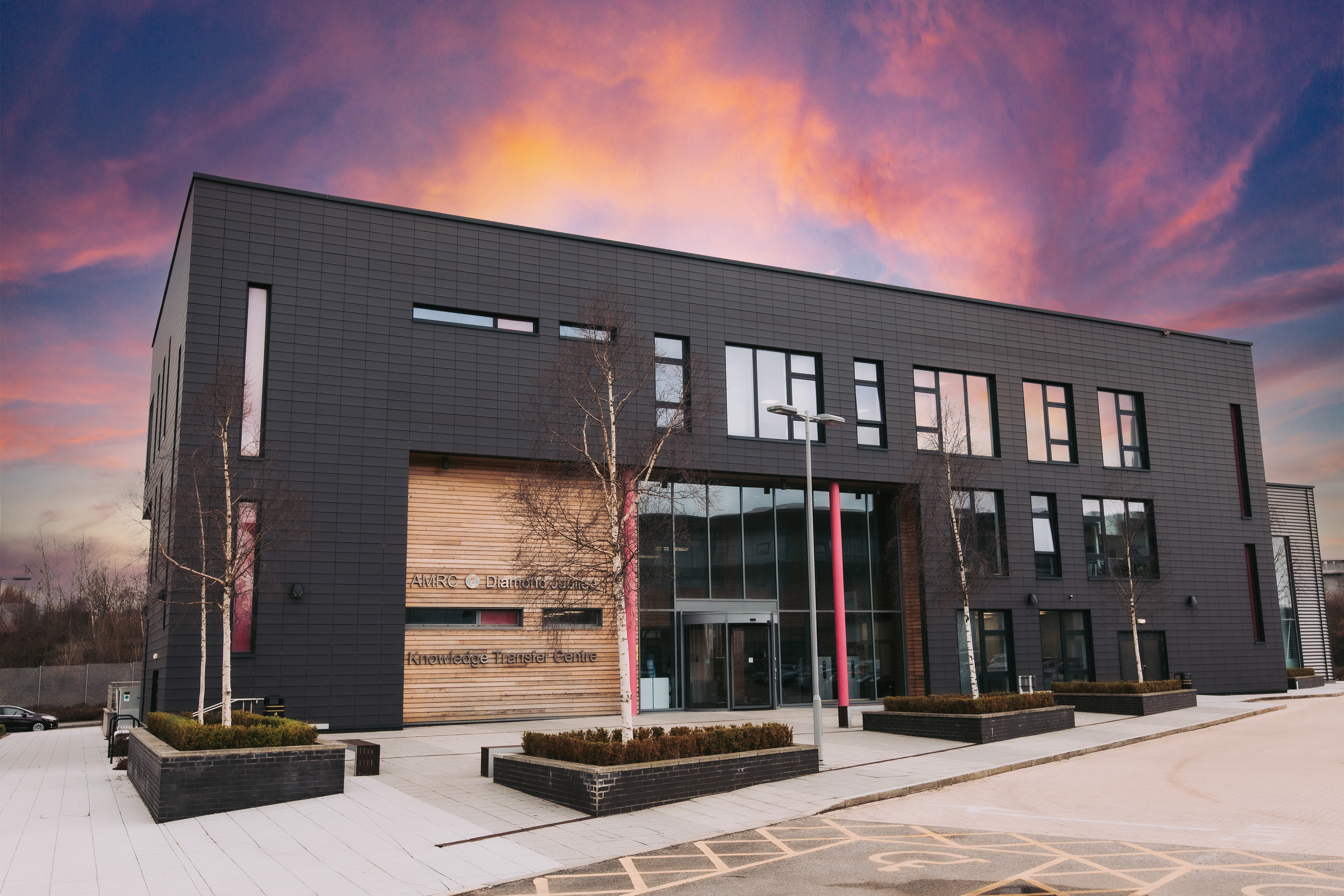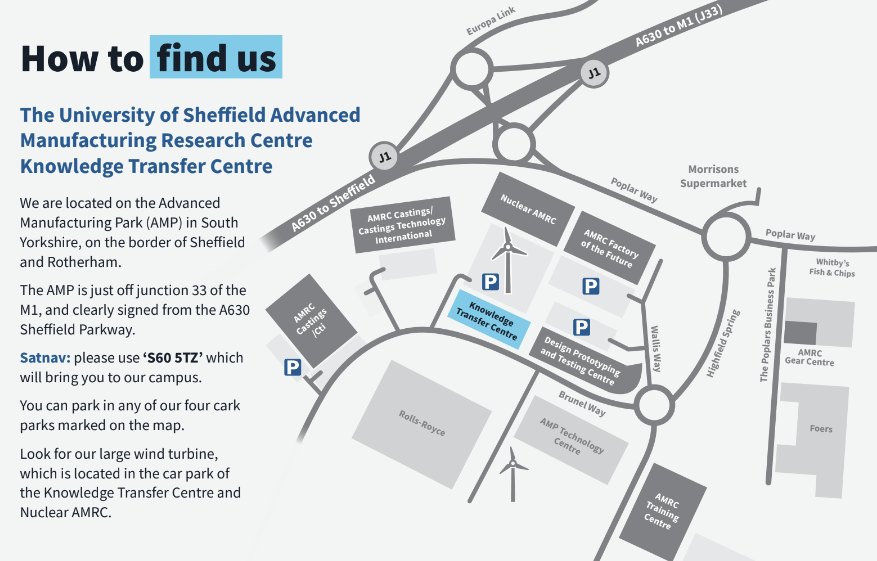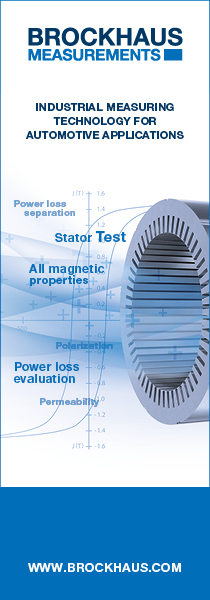Linear and Rotating Machines 2024 @ AMRC
UKMagSoc
LARM2024
Jul 10th 2024 - Jul 11th 2024
Sheffield, United Kingdom
Updated 30 July 24
Spaces are limited – only 2 left
Electric Machines are at the very forefront of magnetic related engineering and development. One of the Society’s goals is to compliment the fantastic work that already takes place in promoting Electric Machines, while fulfilling our responsibility to disseminate the latest technical information to the magnetics community.
Starting with LARM2024 we aim to provide a yearly event to share developments in all magnetic aspects of Linear And Rotating Electric Machines. This includes soft magnetics, hard magnetics, and permanent-magnet-free electric machine topologies, for rotating and linear motors and generators.
We want to build on the fantastic success of MMA23 (Magnetic Materials and Applications) event with VAC in Hanau in 2023 by bringing this regular 2 day Electric Machines event to life!
We couldn’t be happier that the AMRC have agreed to host LARM2024, but if you want to be a part of this event, to either Attend or Talk, then register and get in touch to discuss.
We are also looking to provide exhibitors with great value for money and 8 exhibition spaces are available at a fraction of the cost of many purely commercial events. These events bring engineering staff directly into contact with each other and it’s a great space to have significant commercial conversations. For more details get in touch.
PROGRAMME
The event will run from 09:00-17:00 (UK time) over two days and will include talks and a tour of the AMRC. The draft programme can be seen further down.
VENUE
DAY VENUE
Address *updated 7.6.24*
AMRC – Knowledge Transfer Centre
Advanced Manufacturing Park,
Brunel Way, Catcliffe, Rotherham
S60 5TZ
 The UK’s Advanced Manufacturing Research Centre (AMRC) is one of several connected centres helping UK industry develop new knowledge, innovations, and technologies to manufacture things better, faster, cheaper and greener. Its research helps aerospace, automotive, space, medical and other sectors manufacturing companies compete on the world stage.
The UK’s Advanced Manufacturing Research Centre (AMRC) is one of several connected centres helping UK industry develop new knowledge, innovations, and technologies to manufacture things better, faster, cheaper and greener. Its research helps aerospace, automotive, space, medical and other sectors manufacturing companies compete on the world stage.
DINNER VENUE
The Mowbray
118 Mowbray Street
Neepsend, Sheffield
S3 8EN
TOUR VENUE
AMRC, Factory 2050,
Europa Ave, Sheffield,
S9 1ZA
ACCOMMODATION
We have reserved rooms for 9th and 10th July 2024 at a discounted rate for a limited time only.
Option 1 – Crowne Plaza Royal Victoria Sheffield
Room release date: 24th May 2024
Standard Double £107.00 B&B per night
Standard Twin (2 Double Beds) supplement paid for extra adults of £10.00 per person £107.00 B&B per night
Premium Room £125.00 B&B per night
Junior Suite £157.00 B&B per night
Book a room online or call the main switchboard and quote ‘UK Mag Soc’
Option 2 – Ibis Sheffield City
Room release date: 14th June 2024
Single Occupancy £95.00 B&B per night
ease see agreement attached
To book please call their booking office on 0208 795 7750 9am-5pm Monday-Friday quoting LARM 2024.
TRAVEL

DIETARY REQUIREMENTS
Please let us know as soon as possible if you have any dietary requirements we need to be aware of.
DRESS CODE
The dress code for the event is business attire / smart casual.
CONTINUING CONTACT / GDPR
Please note, by providing contact details during registration, you authorise us to
- use these contact details to let you know details of this event,
- pass on your contact details to AMRC who will share with you health and safety information about coming onsite and to give you the option to sign up to their marketing email, and
- add your contact details to our contact database to let you know about future events that may be of interest.
Please let us know at enquiries@ukmagsoc.org at any time if you do not wish to be contacted in this way. Also, we can remove you from our contact schedule at any point in the future.
PHOTOGRAPHY
We will also be taking photos at the event. If you do not wish to have your photo taken during the event, please contact events@ukmagsoc.org
SPONSOR PACKAGES
An outline of the packages for exhibitors and sponsor packages; Note sponsorship does not guarantee a speaking slot.
- Exhibitor: Exhibiting Space, 1 attendee, Logo and name in delegate handbook, on event webpage, and in event report
- Ferrite Sponsor: as Exhibitor + 2 attendees in total, Logo and link on our marketing material, Listed on our presentations
- Samarium Sponsor: as Ferrite + 3 attendees in total, 1 item of promotional material or USB or advert included in delegate pack and available at Registration, Thanked during session introduction and closing comments, Pop-up banner displayed at Registration – Only 3 available
- Neodymium Sponsor: as Samarium + 4 attendees in total, Advert shown during breaks, Logo on delegate badges, Sponsorship of LARM2024 Dinner, LARM2024 title sponsorship – Only 1 available
We thank our Sponsors


Speakers
Lightweight Motors for Electric Flight - The Magnetically Geared Advantage
by Dave Powell of Magnomatics Limited
Magnomatics have been pioneering the development of magnetically geared motors since 2006, delivering compact and efficient solutions to the marine, renewables and aerospace industries. The race to zero demands step changes in motor and drive power densities as well as system efficiency improvements, where efficiency is often traded with mass for a specific aircraft. This presentation discusses the development of high torque density and high efficiency magnetically geared motors for aircraft propulsion.
Linear to Rotary Magnetic Gear
by Suleiman Sharkh of University of Southampton
The presentation introduces a permanent magnet linear-to-rotary magnetic gear whose topology is derived based on the operating principle of a transverse flux VRPM machine. It is shown that when the number of poles per unit length on all three members, rotor, translator and stationary flux modulating ferromagnetic pieces, are the same, the proposed gear is essentially similar to a magnetic screw gear with discretised helical magnets. Using different number of poles and iron pieces per unit length provides alternative means for adjusting the gear ratio. The paper describes the design and construction of a demonstrator gear whose dimensions were optimised using finite element analysis. Performance results obtained from finite element analysis and experiment are presented and discussed.
You must be a member to download papers. Membership Information...
A Novel Axial Flux Machine Topology for Low-Voltage Traction Applications
by Chris Lines of Saietta Electric Drive
Saietta has developed a patented yokeless dual-rotor axial-flux machine topology with distributed windings that is particularly suited to low voltage traction applications. The unique arrangement offers performance and efficiency benefits given the highly sinusoidal airgap flux density distribution. Also, the cooling of the stator windings is effective owing to the high number of slots per pole and a good radial heat path to a simple circumferential-flow water jacket. The high number of slots per pole also aids in the machine exhibiting a very low cogging torque. The motor has been designed for cost effective manufacture in high volumes and is fully sealed from the environment. Discrete grain-oriented electric steel lamination stacks are used as the teeth for the yokeless stator and the formed windings are produced from standard round copper wire. Crucially, the stator does not rely on either the windings or a stator core to provide its final structure, but rather a novel overmoulding process has been developed to fully encapsulate the stator. Lastly, simple (unsegmented) magnets and solid rotor back irons can be used without significant efficiency penalty, which brings further cost benefits.
You must be a member to download papers. Membership Information...
Materials and Construction Choices Utilised in Cutting-Edge Motors and Generators
by Dean Evans of NEMA
This talk will cover materials and construction methods used to produce cutting-edge motors and generators. The benefits of top of the range materials and build process will be debated and compared to generic “run-of-the-mill” processes against 4 key characteristics:
* Power density
* High speed
* Temperature – High and Low
* Novel topologies
NEMA will present examples of each topic and summarise the talk with a route forward for how to achieve the best machines productively, economically and realistically.
Aircraft Propulsion Motors – Technology Bricks, Trends, and Developments
by David Gerada of University of Nottingham
Being at the heart of electrified aircraft architectures, electrical machines covering a broad power range from hundreds of kW all the way up to multi MW class are being researched and developed to reach unprecedented performance metrics and help accelerate the market uptake of cleaner transport.
This presentation gives an overview of the research targets, performance requirements, and challenges for such machines. Innovations in the constituent technology bricks such as motor topologies, materials, high frequency loss reduction, and advanced thermal management techniques are discussed together with the respective technology readiness levels (TRL) and motor-level performance entitlement.
Deriving from the presenter`s first-hand experience case studies are presented.
Automotive Servo Drives
by Lampros Dardamanis, Christos Prevezianos of ZF Group
During this talk, Lampros and Christos will discuss some of the technical challenges involved in designing automotive servo drives. They will present examples that address the challenges of designing machines for low-voltage, safety-critical applications and an optimization methodology for highly dynamic systems.
You must be a member to download papers. Membership Information...
Design of High Field Post Assembly Magnetising Systems for Linear Rare Earth Permanent Magnet Machines
by Chris Riley of Bunting Magnetics
The presentation will take a detailed look at the design of magnetising systems for post assembly magnetisation of rare permanent magnet assemblies, in particular Linear systems. The downstream advantages of this process will be highlighted, including the reduction in Health and Safety risks and assembly times, as well as an easing of manufacturing. However, the presentation will also show that whilst in many cases the electromagnetic design of the magnetising system is feasible, the high magnetic fields in the magnetising fixtures introduce mechanical and thermal issues that must be overcome to achieve acceptable cycle times or lifetimes when used in production.
NVH Reduction Strategies for Axial Flux Machines
by Tom Hillman of YASA
The Yokeless And Segmented Armature AFM has long been known to offer advantages in torque and power density, and YASA has developed the technology to realise additional benefits in cooling and efficiency. This presentation explores the evolution of the machine and how NVH performance of the topology can be simulated and optimised.
You must be a member to download papers. Membership Information...
SILA: WaveDrives linear actuator with non-contact magnetic transmission
by Graham Whiteley of Wave Drives
WaveDrives ultra-efficient SILA linear actuation technology with an integrated non-contact magnetic transmission has been developed for humanoid robots, co-bots, exoskeletons, bionic-prosthetics and other devices that need to cooperate safely with humans. SILA overcomes key limitations of conventional electromechanical actuation to provide compliant and reliable movement control across the broad dynamic range needed in the unpredictable and challenging environment of the human kinesphere. The unique benefits, challenges and scalability of SILA magnetic gearing will be explored in this presentation
Revolutionising Long-Distance Autonomous Transport Systems: Innovations in Linear Motor Technology
by Rupert Cruise of Magway Limited
In the evolving field of magnetic engineering, linear motor systems stand out as pivotal to advancing efficient, sustainable transportation and machinery solutions. Magway Limited, a leader in linear motor technology, is at the forefront of these innovations, continually pushing the boundaries of performance and application. This talk will delve into Magway's latest advancements, focusing on our novel designs, patented control methodologies, and the application of cutting-edge magnetic materials.
The presentation will explore recent breakthroughs in system integration that facilitate smoother, faster, and more energy-efficient operations across various industries. Special attention will be given to scalability and reliability, which are key factors that allow Magway's linear motors to meet diverse operational demands ranging from logistics solutions to bulk materials transport.
You must be a member to download papers. Membership Information...
Linear Generators for Use in Wave Energy Converters
by Nick Baker of Newcastle University
Offshore wind is now well established with GW of installed capacity. Wave energy is an alternative form of marine energy which also has the potential to contribute to sustainable electricity generation. This comparatively immature technology operates at linear speeds at least an order of magnitude lower than that found in other sectors, posing unique challenges to the electrical power train.
Nick Baker is a professor in Emerging Electrical Machines at Newcastle University with a specialism in developing low speed linear reciprocating electrical machines. In this talk, he will introduce the electrical challenges in the area of linear power take off in marine renewable energy and discuss some recent progress in linear machines developed in academia and industry.
Introduction to the AMRC
by Lloyd Tinkler of Advanced Manufacturing Research Centre (AMRC)
Factory 2050, and brief overview of electrical machines research at the AMRC
You must be a member to download papers. Membership Information...
Magnetic Properties and Applications of Non-Oriented-Grain (NO) FeSi Alloys: Trends and Perspectives
by Enzo Ferrara of Istituto Nazionale di Ricerca Metrologica (INRIM)
Patented by Robert Hadfield at the beginning of the XX century, since from their introduction as the first commercial alloys used in electrotechnics, NO FeSi steels, thanks to their low-cost composition and basic production processes, dominate the global market of soft magnetic materials. NO FeSi acted as a test bench to recognize relationships between, composition, structure, and magnetic performance. Their structural, mechanical, and magnetic properties have been so far matter of investigation, providing knowledge on the role played by e.g. grains size and boundary, cube crystallographic orientation, electrical resistivity, thickness, and mechanical stresses on magnetization processes and soft magnetic features in the low to medium frequency range. Actually, while thinner laminations are available for applications at higher frequencies and green guidelines pursue recycling and renewable resources, improvement and simplification of NO magnetic steels production processes remain a key issue to meet sustainable transformation and use of electrical energy.
You must be a member to download papers. Membership Information...
Screen Printing Electrical Steel Sheets – Possibilities and Advantages
by Torsten Mix of Fraunhofer Institute for Manufacturing Technology and Advanced Materials, Germany
High power densities and efficiencies are crucial for electrical machines. Especially for high frequency motor application with innovative designs they require the right type of electrical steel sheet. Additive manufacturing offers the possibility of printing sheets with lowest losses, as thinner sheets and different alloy contents can be produced. The additive manufacturing of Fe-6.5Si and other Fe-based electrical steel sheets by screen printing illustrate new possibilities for producing mechanical robust sheets with low losses in desired end geometry.
Innovative Solutions: Linear Induction and Synchronous Machines and Their Diverse Applications
by Muhsien Yazid of Force Engineering Ltd
For over four decades, Force Engineering has been at the
forefront of engineering and production, delivering more
than 60,000 Linear Induction Machines (LIMs), Linear
Synchronous Motors (LSMs), and a range of electromagnet
products, including induction heating equipment and linear
magnetic brakes, to clients across diverse industries. This
presentation reveals a spectrum of innovative solutions
through the showcase of LIMs and LSMs, highlighting their
diverse applications across various sectors. With a focus on
cutting-edge technology, the event showcases the
capabilities and flexibility of LIM and LSM in powering a
wide array of systems and processes, spanning from
transportation to amusement parks, industrial applications,
and magnetic brakes.
Through real-world examples and case studies, attendees
will gain insights into the transformative potential of linear
motor technologies and their role in shaping the future of
multiple sectors. Join us to explore the possibilities of LIM
and LSM, driving innovation and progress in today's
dynamic landscape.
Challenges for the Next-Generation of Electromechanical Actuation Principles
by Dave Krop of TU Eindhoven, Electromechanics and Power Electronics group
Still to be precisely formulated, but an overview of the research activities in the area of both multi-dof and single dof linear stages within the Electromechanics and Power Electronics (EPE) group will be presented. The presentation will contain an overview of research on the successful realization of unconventional electromagnetic actuation principles researched in the past and ones currently being researched. The process from concept to a proof-of-principle demonstrator will be addressed. To that end, the EPE philosophy is presented and how associated secondary research has sprung from issues encountered in our research over the years. These include the physical modeling of a wide variety of bespoke inter-disciplinary computational methods and development of in-house testing equipment and test benches. Finally, an outlook on our future research roadmap will be provided and how our experience from the past has helped to shape it.
Additive Manufacturing of Electrical Machine Windings: State of the Art
by Nick Simpson of University of Bristol
The unparalleled geometric freedom of metal Additive Manufacturing (AM) allows complex electromagnetic coils to be realised featuring targeted AC loss mitigation through spatially varying conductor shape and topology, embedded thermal management such as liquid cooling channels or extended surfaces, novel electrical insulation coatings, and value-add features such as integrated terminals and sensors. This talk will present the state-of-art in digital design, manufacture, and test of such windings including the post-processing challenges in realising low surface roughness and robust electrical insulation.
Recent Development of Modular Machines
by Guang-Jin Li of University of Sheffield
To streamline manufacturing processes for stator cores and windings while enhancing fault-tolerant capabilities, the utilization of modular electrical machines, particularly those with segmented stators, is on the rise. However, the presence of flux gaps (also known as flux barriers) between stator segments is often unavoidable. This presentation explores novel approaches to leverage these flux gaps in order to optimize the performance of modular permanent magnet machines with various slot/pole combinations. A thorough investigation into the impact of flux gaps on the electromagnetic characteristics of modular PM machines, encompassing parameters such as winding factor, open-circuit air-gap flux densities, back-EMFs, cogging torque, on-load torque, inductances, magnetic saturation, and copper losses, has been conducted. General rules governing these influences will facilitate the design of these modular machines. The findings reveal that, in modular machines with a higher slot number than pole number, the flux gaps detrimentally affect electromagnetic performance due to reduced winding factor and the flux defocusing effect. Conversely, for modular machines with a lower slot number than pole number, proper adjustment of flux gap width can significantly enhance electromagnetic performance owing to increased winding factor and the flux focusing effect. Beyond improved electromagnetic performance, flux gaps can serve as additional cooling channels, contributing to enhanced internal cooling of modular machines, particularly in the stator back iron and end-winding areas. Two innovative cooling technologies, namely ventilation cooling and forced liquid cooling, are explored in this presentation. Both capitalize on existing flux gaps, and computational fluid dynamics (CFD) and measured results demonstrate that these flux gaps not only enhance electromagnetic performance but also improve the thermal characteristics of modular machines.
You must be a member to download papers. Membership Information...
Magtec Motor Industrialisation and Exploitation
by Andrew Sloan of Magnetic Systems Technology Ltd
Overview of the recently concluded APC funded project to achieve 5000 motors per annum and insight into Magtec’s on-the-road fleet of ev drivelines.
Programme
| Time | Session Title | Session Host |
|---|
| 09:00 | Registration | |
| 09:50 | Welcome | Chair |
| 10:00 | Linear and Rotary Magnetic Gear | Suleiman Sharkh, University of Southampton |
| 10:30 | Lightweight Motors for Electric Flight - the Magnetically Geared Advantage | Dave Powell, Magnomatics Limited |
| 11:00 | NVH reduction strategies for Axial Flux Machines | Tom Hillman, YASA |
| 11:30 | Break | |
| 12:00 | Recent Development of Modular Machines | Guang-Jin Li, University of Sheffield |
| 12:30 | Magtec Motor Industrialisation and Exploitation | Andrew Sloan, Magtec |
| 13:00 | | Lunch |
| 14:00 | Materials and construction choices utilised in cutting-edge motors and generators | Dean Evans, NEMA Ltd |
| 14:30 | Aircraft Propulsion Motors – Technology Bricks, Trends, and Developments | David Gerada, University of Nottingham |
| 15:00 | Break | |
| 15:30 | A Novel Axial Flux Machine Topology for Low Voltage Traction Applications | Chris Lines, Saietta Electric Drive |
| 16:00 | Automotive servo drives | Lampros Dardamanis and Christos Prevezianos, ZF Group |
| 16:30 | Additive Manufacturing of Coils | Nick Simpson, University of Bristol |
| 17:00 | Close | Chair |
| 17:15 | Free time | |
| 18:15 | | |
| 18:30 | Drinks Reception | |
| 19:30 | Informal dinner | |
| 23:00 | End of Dinner | |
| DAY 2 | | |
| 08:30 | Access to venue | |
| 08:55 | Welcome | Chair |
| 09:00 | 3d Printing of Electrical Steel Laminations | Torsten Mix, Fraunhofer Institute for Manufacturing Technology and Advanced Materials |
| 09:30 | Manufacturing Processes of Magnetic Cores of E-Machines | Enzo Ferrara, INRIM |
| 10:00 | Innovative Solutions: Linear Induction and Synchronous Machines and Their Diverse Applications | Muhsien Yazid, Force Engineering Ltd |
| 10:30 | Break | |
| 11:00 | Design of High Field Post Assembly Magnetising Systems for Linear Rare Earth Permanent Magnet Machines | Chris Riley, Bunting |
| 11:30 | Linear Generators for Wave Energy | Nick Baker, University of Newcastle |
| 12:00 | SILA: WaveDrives Linear Actuator with Non-Contact Magnetic Transmission | Graham Whiteley, Wave Drives |
| 12:30 | Lunch | |
| 13:30 | Challenges for the Next Generation of Electromechanical Actuation Principles | Dave Krop, EPE TU/Eindhoven |
| 14:00 | Revolutionising Long-Distance Autonomous Transport Systems: Innovations in Linear Motor Technology | Rupert Cruise, Magway Limited |
| 14:30 | Introduction to the AMRC | LLoyd Tinkler, AMRC |
| 15:00 | Break | |
| 15:30 | Tour of Lab | |
| 17:00 | Tour Finishes | |
| 17:30 | Informal Networking | |
Registration
| Type |
Standard Fee |
Group Discount (3+ delegates) |
| Member |
£455.00 |
10% |
| Non-Member |
£495.00 |
10% |
| Student |
£395.00 |
10% |
| Exhibiting |
£895.00 |
10% |
| Ferrite Sponsor |
£1,995.00 |
10% |
| Samarium Sponsor |
£2,995.00 |
10% |
| Neodymium Sponsor |
£4,995.00 |
10% |
Register to attend this event  The UK’s Advanced Manufacturing Research Centre (AMRC) is one of several connected centres helping UK industry develop new knowledge, innovations, and technologies to manufacture things better, faster, cheaper and greener. Its research helps aerospace, automotive, space, medical and other sectors manufacturing companies compete on the world stage.
The UK’s Advanced Manufacturing Research Centre (AMRC) is one of several connected centres helping UK industry develop new knowledge, innovations, and technologies to manufacture things better, faster, cheaper and greener. Its research helps aerospace, automotive, space, medical and other sectors manufacturing companies compete on the world stage.





